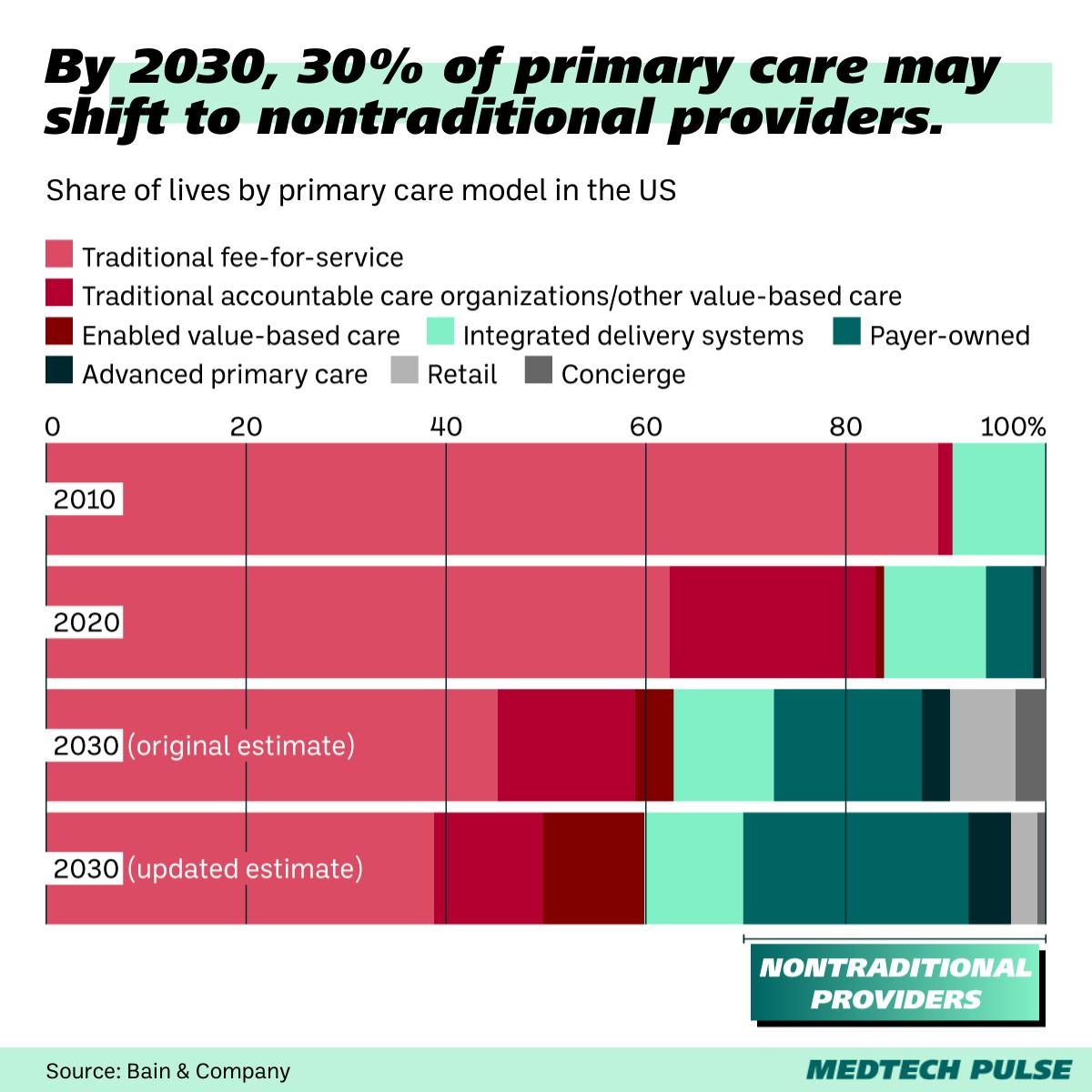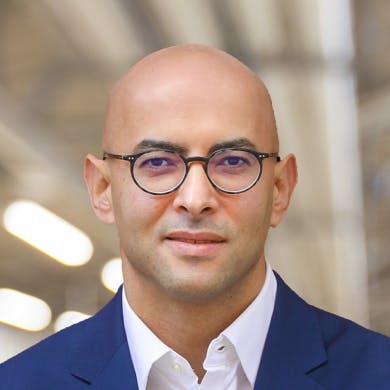The changing primary care landscape
The last time you saw a primary care provider, what did it look like?
Did you go into an office and see a doctor who has been tending to your health for years or decades?
While that kind of relationship is the traditional approach to primary care many of us think of, this model is becoming rarer and rarer each year as primary care evolves.
And that’s not necessarily a bad thing.
Last month, Bain published a report on the future of primary care. The report emphasized that so-called nontraditional models are growing across the U.S. market—and will continue to do so over the next five years.
In fact, this report is a published update to an original estimate, revising the projection to indicate even more impact from nontraditional providers by 2030.

So, what are these nontraditional models taking over primary care? They include:
Concierge primary care — membership-based primary care, often branded as all-inclusive 24/7 medical providers (Example: Sollis Health)
Retail care — though Walmart Health has closed, other retail plays in the primary care space include CVS’ retail clinics and Amazon’s acquisition of One Medical
Advanced primary care (APC) — an employer-based approach to membership primary care, where employers contract directly with the practice and pay a flat fee per member instead of fee-for-service
Payer-owned providers — where payers offer their own branded primary care, whether as payviders (Example: Kaiser Permanente) or by offering members direct access to staff primary care providers (Example: Oscar Primary Care).
Why is traditional primary care being eclipsed by some of these new models? In many ways, traditional primary care is failing to serve patients’ needs. There are staffing challenges and care gaps that the status quo just cannot fix.
We have a quantity problem. But in many places, we also have a quality problem. We need to balance providing quality care and meaningful provider relationships to as many patients we can—but we also have to reach more patients than we are reaching.
Nontraditional primary care offers potential solutions to these problems. Of course, it won’t solve them all. However, I believe it is promising to see how much these next-generation primary care providers embrace medical technology.
Effective, modern, and innovative primary care approaches depend on:
Embracing telehealth — to reach more patients at more convenient times, even if it means mailing them a blood pressure cuff
Investing in digital experience — patients are meant to interact with their primary care providers more than any other doctors, so making that experience user-friendly is important
Embracing communication technologies — whether it’s using a chatbot for triage or enabling messaging between visits, effective and prompt communication leads to more trust and patient retention
Primary care is one of our most important healthcare tools. We must keep investing to make it better—however that may look.
